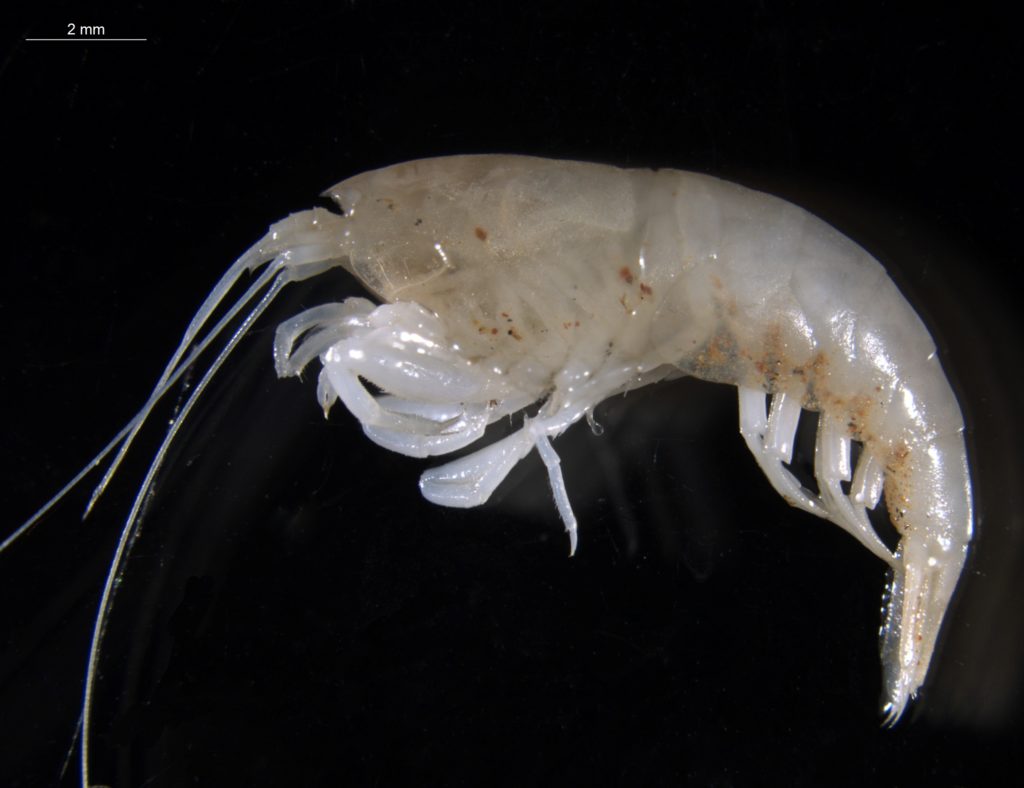Award for CSIRO’s stygofauna research
The team won an award for a CSIRO Gas Industry Social and Environmental Research Alliance (GISERA) project to characterise stygofauna and subterranean groundwater-dependent ecosystems in the Beetaloo Sub-basin in central Northern Territory.
The Research in Natural Resource Management Award presented to the stygofauna project team was one of ten categories at the 2021 Northern Territory Natural Resource Management Awards. The awards recognise people, groups and organisations who dedicate time and effort to sustainable management of the Northern Territory’s waterways, land and sea country.
The GISERA project improved knowledge of stygofauna and subterranean groundwater dependent ecosystems in the Beetaloo Sub-basin and Roper River system, in line with the Final Report of the Scientific Inquiry into Hydraulic Fracturing in the Northern Territory (2018).
Dr Gavin Rees, CSIRO microbial ecologist and project team leader said the team was proud and excited to have received the award.
“This was a great example of collaboration across diverse scientific research areas that helped to fill an important knowledge gap about groundwater dependent ecosystems in the Northern Territory,” Dr Rees said.

The stygofauna research team in the field with extraction pump – left to right CSIRO’s Dr Gavin Rees and Dr Daryl Nielsen, CDU’s Professor Jenny Davis and Dr Stefanie Oberprieler.The stygofauna research team in the field with extraction pump – left to right CSIRO’s Dr Gavin Rees and Dr Daryl Nielsen, CDU’s Professor Jenny Davis and Dr Stefanie Oberprieler.
Stygofauna comprise a range of aquatic animals that have evolved to survive in the eternal night of subterranean caves and aquifers.
Stygofaunal communities can include microorganisms such as protozoa and bacteria through to crustaceans, worms, molluscs, mites, beetles and occasionally fish.
Stygofaunal communities are considered important as a biodiversity resource, as indicators of groundwater health and as providers of ecosystem services.
Results of the GISERA project revealed Northern Territory aquifers support a diverse range of stygofaunal species.
All Beetaloo stygofaunal communities sampled were dominated by crustaceans, namely: shrimps, amphipods, ostracods, copepods and syncarids.

stygo shrimp apex predator Beetaloo
Nightmare in the dark: The blind shrimp shrimp Parisia unguis is the apex predator of the Beetaloo stygofauna.
This fauna showed little affinity with the stygofauna recorded from more extensively sampled Western Australian aquifers, with new genera and species present in the Beetaloo Sub-basin.
Overall, the presence of stygofauna at widely separated sites across the Cambrian Limestone Aquifer is consistent with substantial connectivity within the aquifer.
Dr Rees said further research would be required to quantify the risk of contamination impacts on stygofauna from possible spill events that takes into account migration pathways and processes including adsorption, dilution and microbial metabolism in both soil and aquifer as well as the high connectivity in ground water systems.
Territory Natural Resource Management is an independent not for profit, membership-based organisation which has been working with landholders, community groups, industry and government since 2003, to ensure sustainable management of water, land, soils and biodiversity in the Northern Territory.
